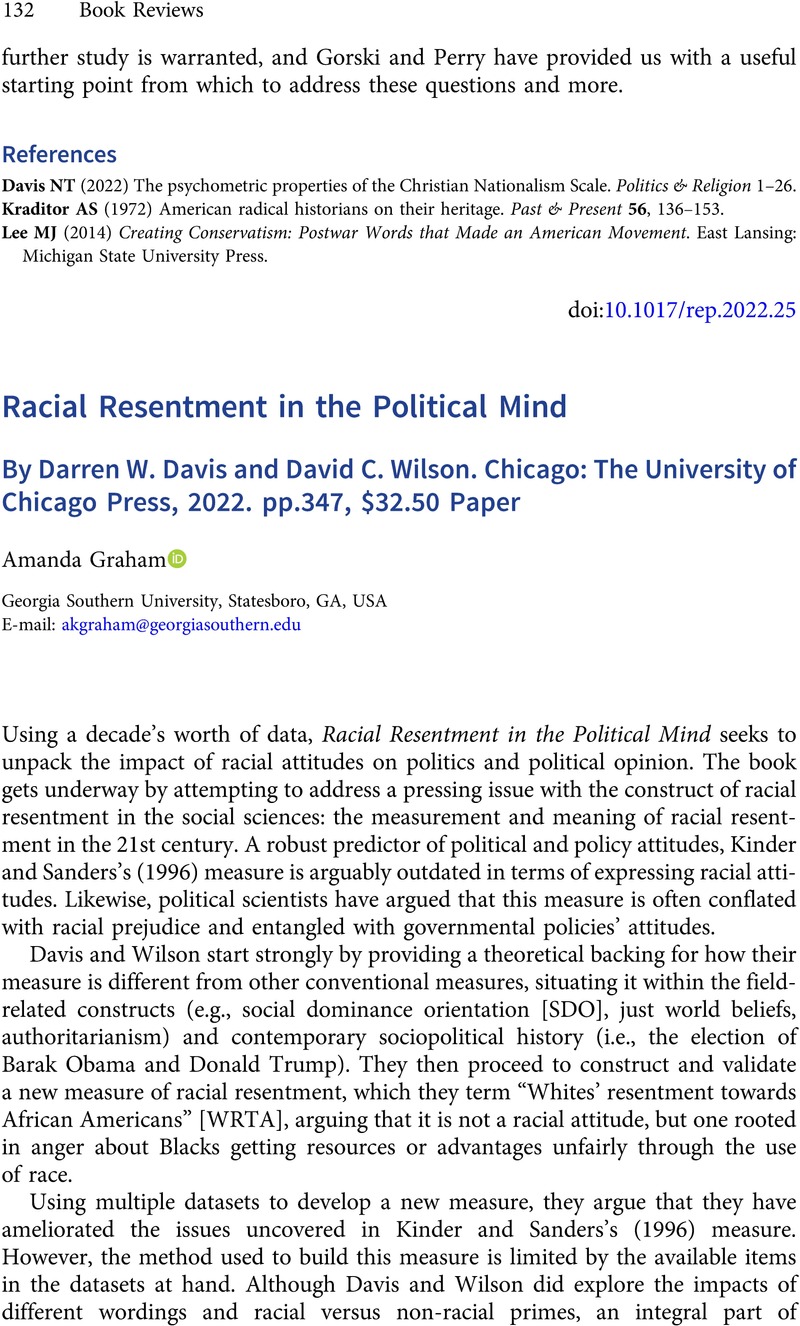No CrossRef data available.
Article contents
Racial Resentment in the Political Mind By Darren W. Davis and David C. Wilson. Chicago: The University of Chicago Press, 2022. pp.347, $32.50 Paper
Review products
Racial Resentment in the Political Mind By Darren W. Davis and David C. Wilson. Chicago: The University of Chicago Press, 2022. pp.347, $32.50 Paper
Published online by Cambridge University Press: 11 October 2022
Abstract
An abstract is not available for this content so a preview has been provided. Please use the Get access link above for information on how to access this content.

- Type
- Book Review
- Information
- Copyright
- © The Author(s), 2022. Published by Cambridge University Press on behalf of The Race, Ethnicity, and Politics Section of the American Political Science Association
References
Kinder, DR and Sanders, LM (1996) Divided by Color: Racial Politics and Democratic Ideals. Chicago, IL: University of Chicago Press.Google Scholar


